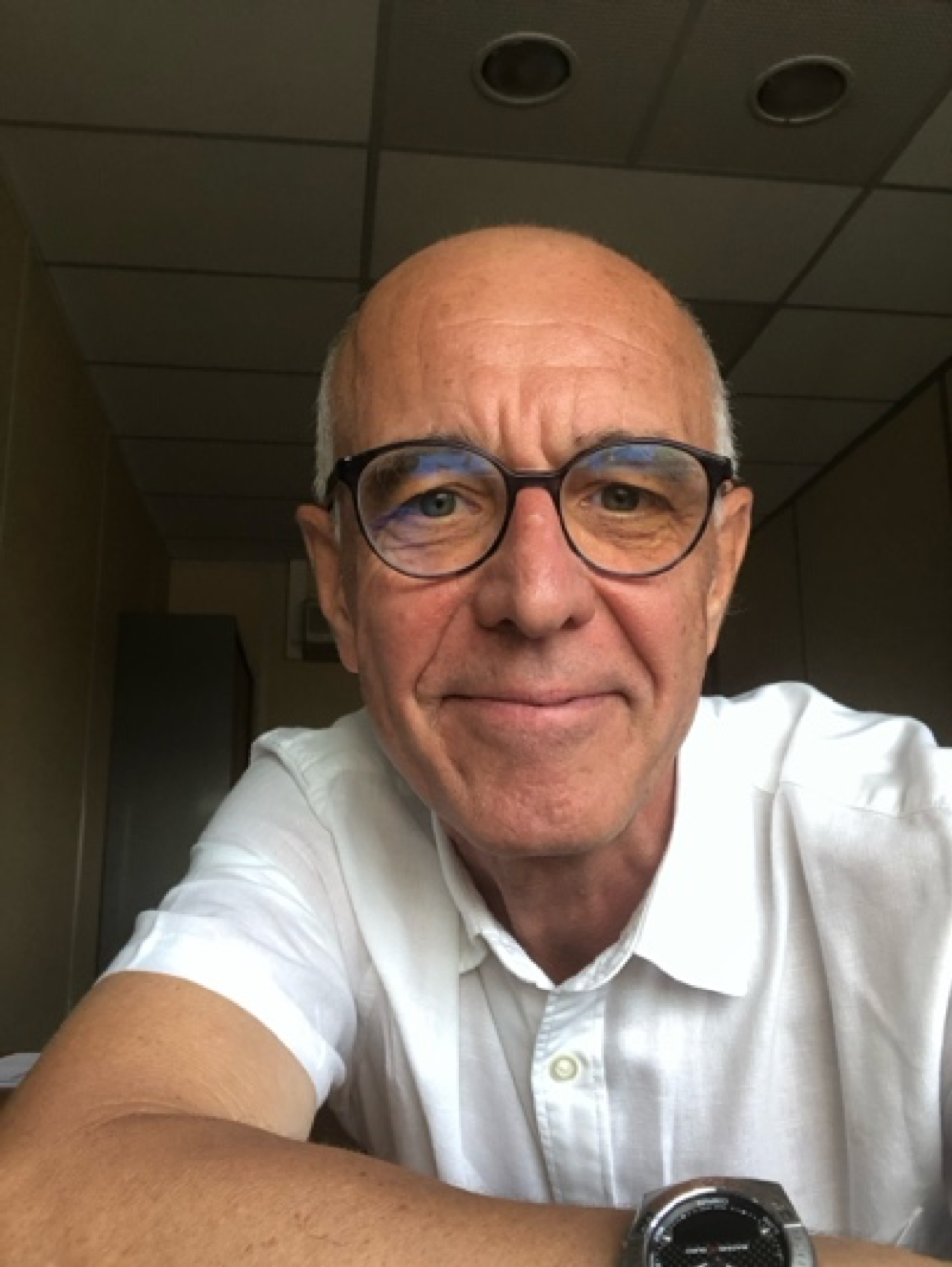Nicolas Postel-Vinay1, Jin Ye Yeo2
1Unité Fonctionnelle d’hypertension Artérielle, ESH Excellence Center, Hôpital Européen Georges Pompidou, Assistance Publique-Hôpitaux de Paris, Paris, France; 2MH Editorial Office, AME Publishing Company
Correspondence to: Jin Ye Yeo. MH Editorial Office, AME Publishing Company. Email: editor@themhealth.org
This interview can be cited as: Postel-Vinay N, Yeo JY. Meeting the Editorial Board Member of MH: Dr. Nicolas Postel-Vinay. mHealth. 2024. Available from: https://mhealth.amegroups.org/post/view/meeting-the-editorial-board-member-of-mh-dr-nicolas-postel-vinay.
Expert introduction
Dr. Nicolas Postel-Vinay (Figure 1) is a clinician in the Hypertension Unit of the European Hospital Georges Pompidou, European Society of Hypertension Excellence Center (Paris, France) and also works with Santé Service Foundation Hospital at Home, (Levallois, France).
His area of expertise covers new information and communications technologies, patients’ digital paths, patient education, and remote medical decision-making. He is especially concerned with the advantages and challenges of telemonitoring and self-management in the clinical management of arterial hypertension. In his role of usual care, he is directly confronted with the problem of digital health literacy among patients and health professionals. He has piloted projects for the French Ministry of Health and the prestigious research and teaching institution, Collège de France. He is also an active participant in teaching activities in the field of digital health.

Figure 1 Dr. Nicolas Postel-Vinay
Interview
MH: Can you share what initially drew you to focus on hypertension? How has your career in this field evolved over the years?
Dr. Postel-Vinay: At the beginning of a medical career, the choice of a field is often influenced by friendships. This was the case for me. I was lucky enough to join a team with a high level of clinical research practice. My mentor steered me towards therapeutic education at a time when the discipline was not yet structured and few professionals had applied it to arterial hypertension, whereas it had a better start in diabetes or asthma.
MH: How did your interest in digital health, particularly telemonitoring and remote decision-making of arterial hypertension begin?
Dr. Postel-Vinay: My mentor, Prof. Joel Ménard, was a pioneer in the field of home blood pressure measurement and one of the very first to use remote transmission with the French system known as "Minitel". That was 40 years ago! Like other of his students, I followed his advice and took advantage of the possibilities offered by the Internet in the late 1990s.
MH: Can you provide a brief overview of the advancements in digital health technologies for blood pressure management over the years? How have these advancements influenced your approach to managing arterial hypertension in your patients?
Dr. Postel-Vinay: As early as 3 decades ago, our hypertension unit organized therapeutic education sessions for all hospitalized patients. In addition to written materials and focus group sessions, they could watch a video. With the advent of the Internet, we made this education available to everyone. We then used interaction tools, such as e-mail and online forms. We integrated them into the care pathway. At that time, many physicians thought that patients were not able to measure their blood pressure with the help of new information and communication technologies (NICTs). To overcome their doubts, we published evaluations and participated in conferences. We now know that a significant proportion of patients can achieve autonomy with the help of educational materials or validated algorithms.
MH: Despite the potential of digital health tools, many patients and healthcare professionals face challenges with digital health literacy. How do you address these challenges in your clinical practice, and what strategies have you found effective in improving digital literacy among your patients and colleagues?
Dr. Postel-Vinay: Poor literacy prevents people from taking full advantage of new health technologies. But let's be realistic: health professionals are powerless and do not have the time to compensate for their lack of education: inequality is a global problem that starts in childhood.
MH: What role do you see for patient education in the successful implementation of telemonitoring systems for hypertension management? How do you incorporate patient education into your clinical practice?
Dr. Postel-Vinay: In our hypertension unit in Paris (France), we are fortunate to have a multidisciplinary team dedicated to patient education, coupled with the promotion of self-monitoring at home (with or without connected devices). Today, to reach people outside our hospital, we have developed a website and software (Hy-Result®) that are freely available. In 2025, we will test the system's ability to automatically guide patients through the care pathway. The research question will be to quantitatively observe the proportion of patients who consent to test their own eligibility for certain treatments.
MH: Looking ahead, how do you foresee the future of telemonitoring and self-management of hypertension? What trends or emerging technologies do you see significant promise in shaping the future of hypertension management?
Dr. Postel-Vinay: The respective advantages and disadvantages of telemonitoring and self-management are rarely discussed in peer-reviewed journals for two reasons: First, these approaches are very different, and second, they have been evaluated in relation to standard care without comparison with each other. Predicting trends is not easy because the uptake of new technologies does not depend solely on the results of scientific evaluations. Economic, societal, and commercial attitudes, as well as resistance to change, also play a role. What's more, who can say how quickly artificial intelligence will change our practices? To answer your question in detail would take a whole article.
